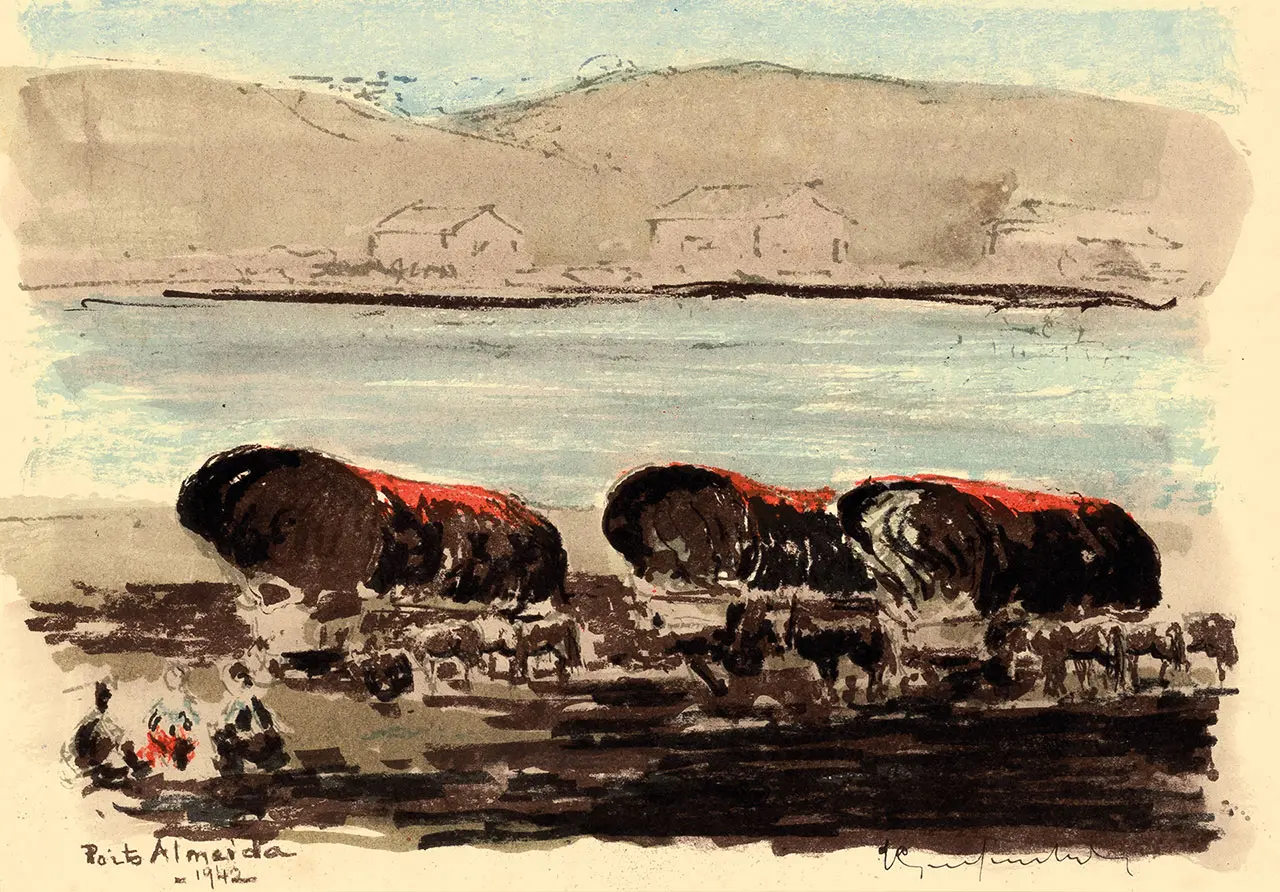União da Vitória - PR | 1958
15. Camp on the Iguaçu bank
20,1 x 29,0 cm | Hand-watercolor lithograph
We crossed the Iguaçu on the small ferry that links the two banks five hundred meters upstream of the rapids. The men unharnessed the horses, filled up the manger attached to the side panel of the wagons. We drew water at the river.
It’s now resting time for the wagoners. Squatting around a campfire, they pass around the bottle of cachaça¹ waiting for the water to start to boil. We then proceed to the rites of chimarrão², while the still fresh memories of the stay in União da Vitória come back. Soon, after a frugal snack of sausage and black bread, the caroceiros will sleep under the tarred tarp of their wagons, in the middle of flour, sugar, salt sacs, cotton rolls, tool cases, the return load that substituted the grain, the eggs, the poultry cages, the barely dried animal skins, the raw linen rolls that we unloaded in town yesterday.
Often I would make the trip. I would have a taste of a harsh charm
sharing the life of these boys with Slavic names, going on the road to
Cruz Machado, clinging to the bench of these primitive vehicles that
invincibly evoked in me the Michael Strogoff³ of my childhood.
1. A distilled spirit made from sugar cane juice. 2. A drink of amerindian origin, made
with yerba mate, very popular among the cowboys and “gaúchos” of the south of Brazil.
3. A novel written by Jules Verne in 1876.

